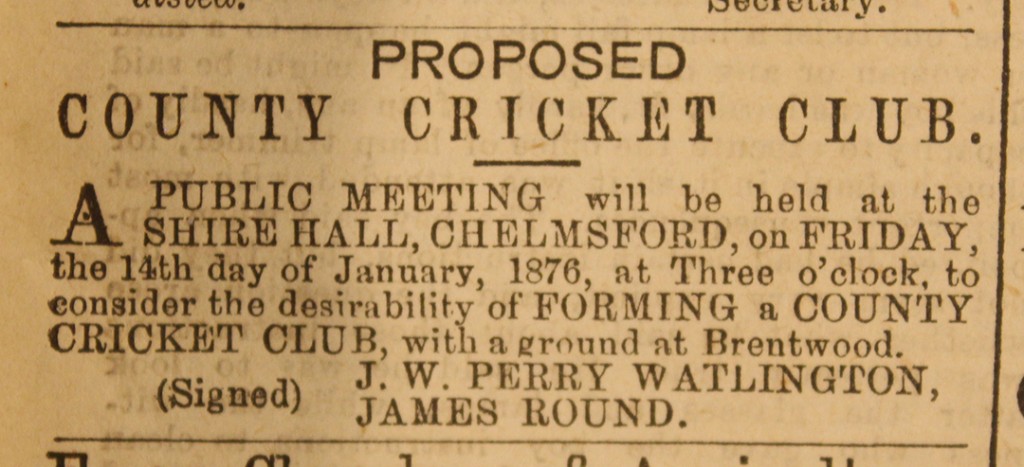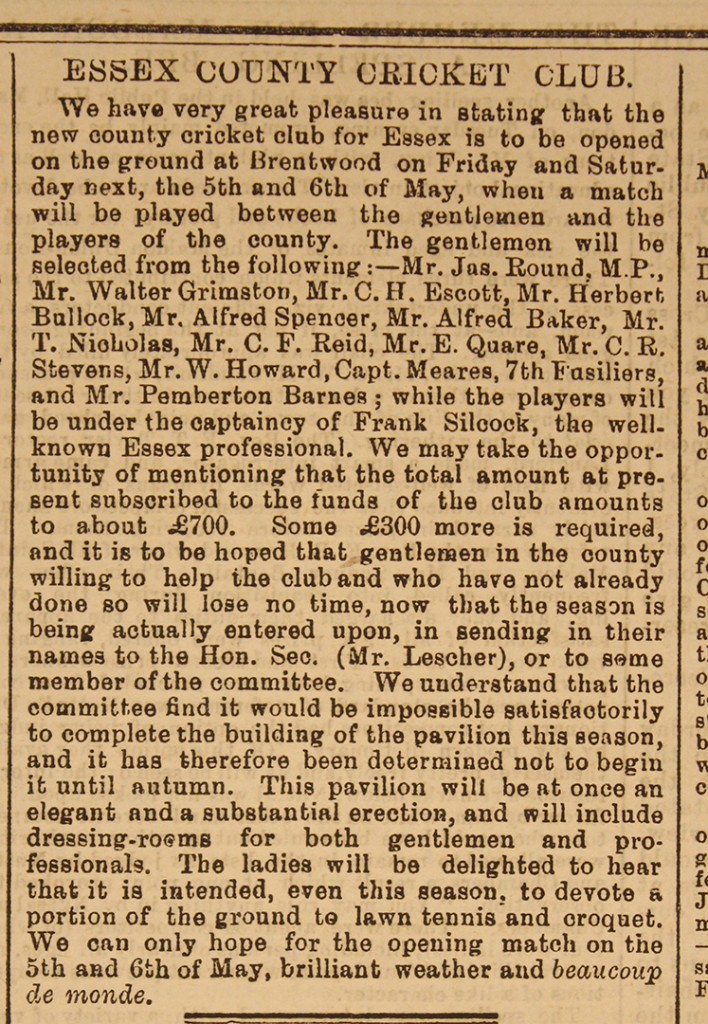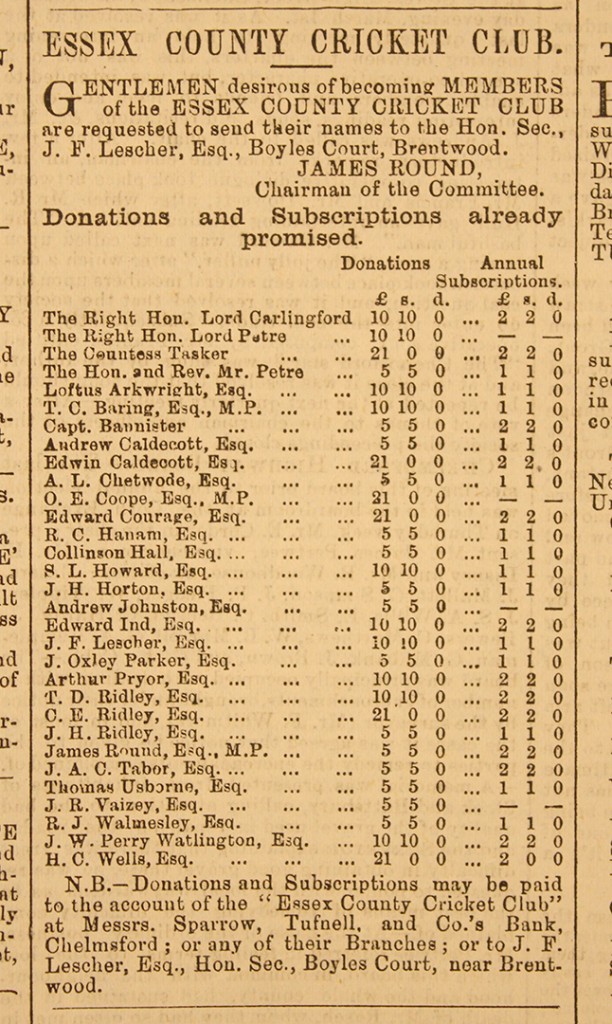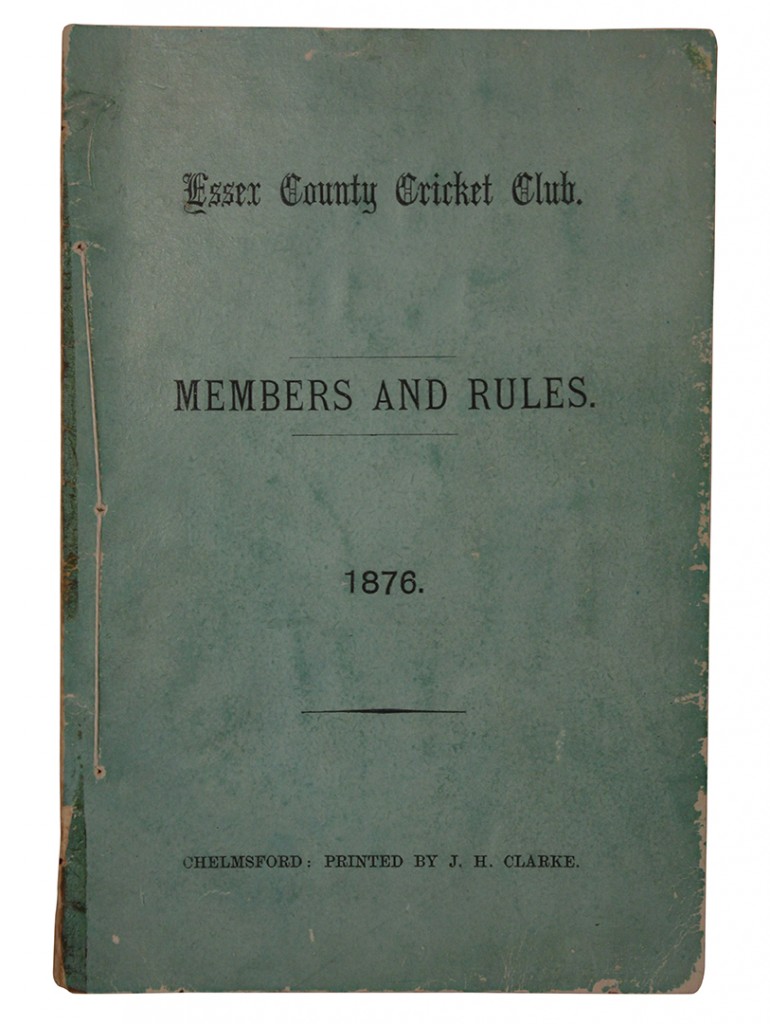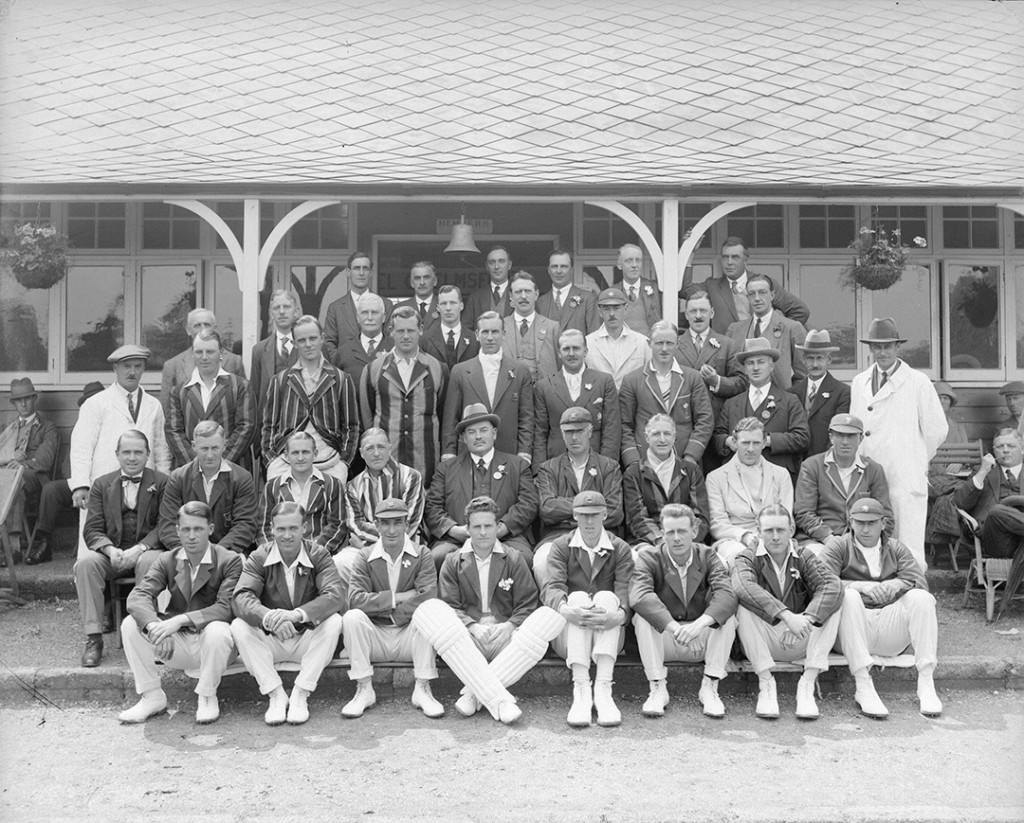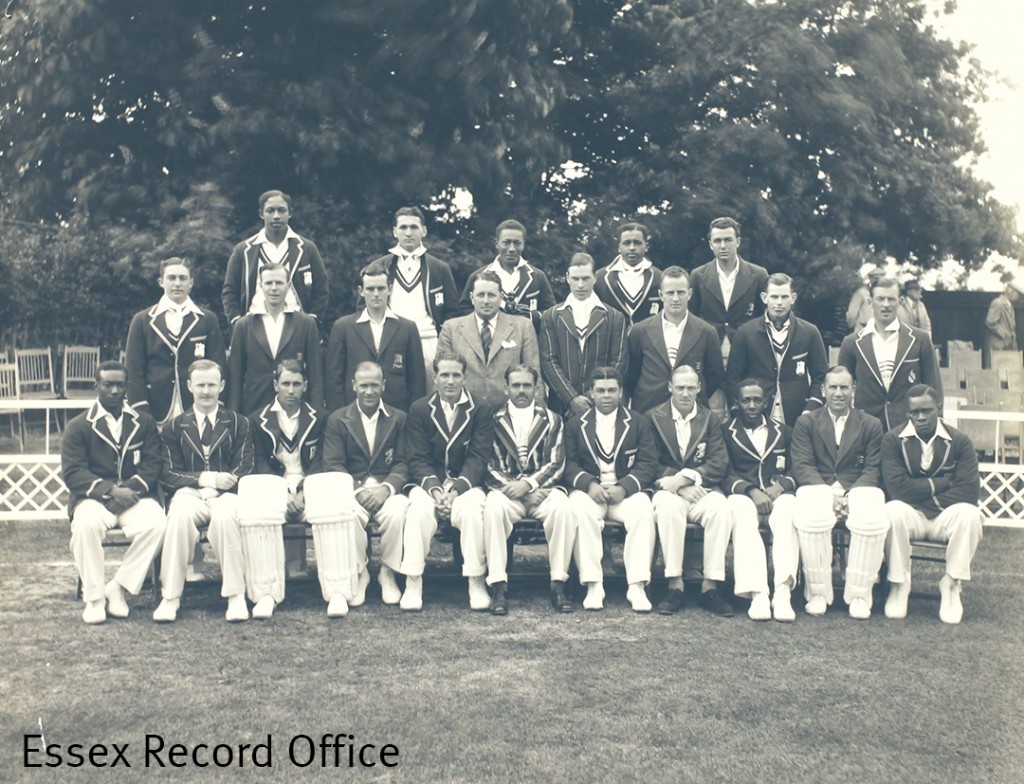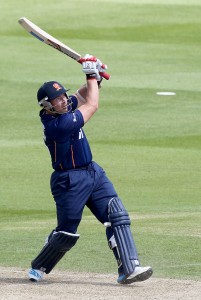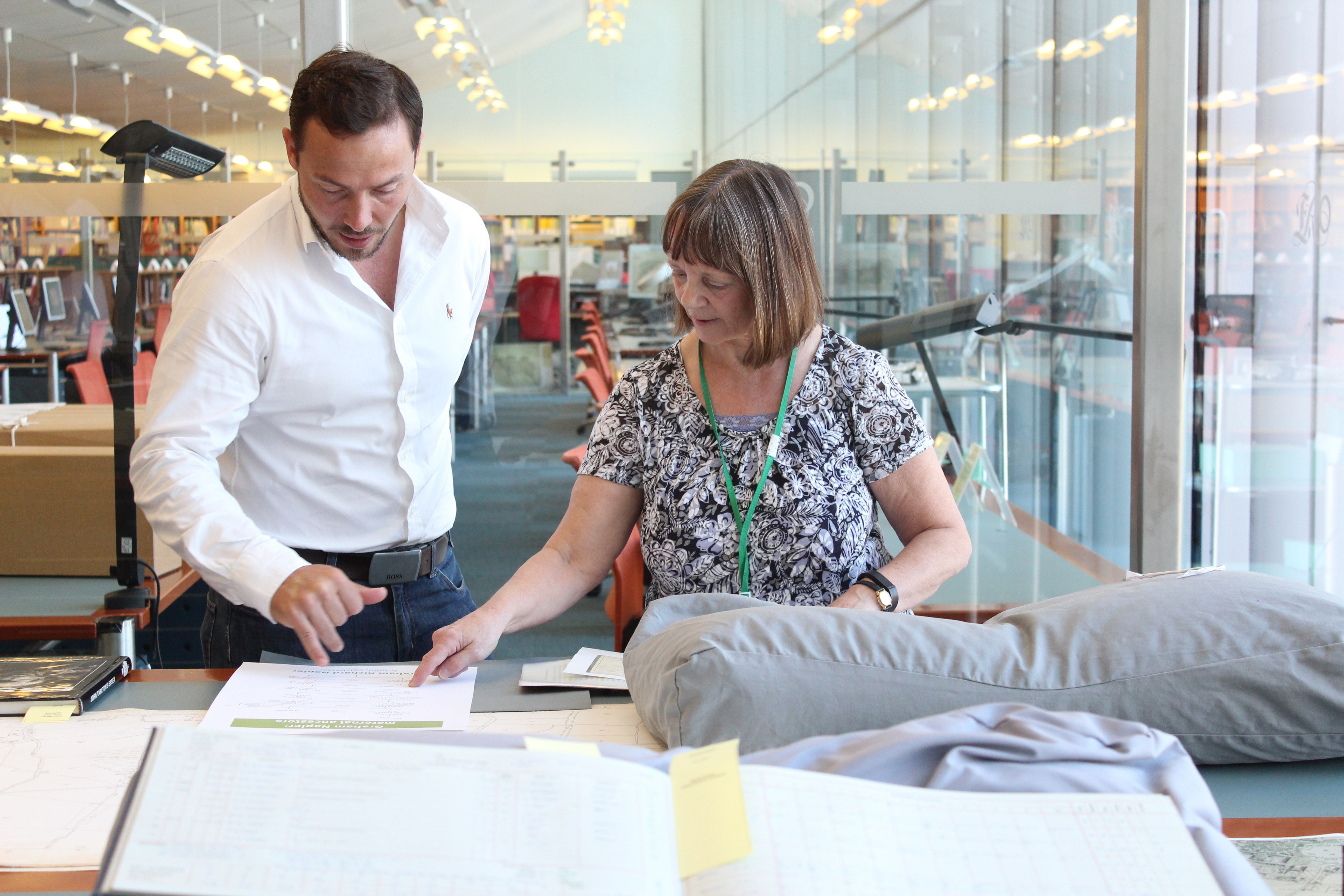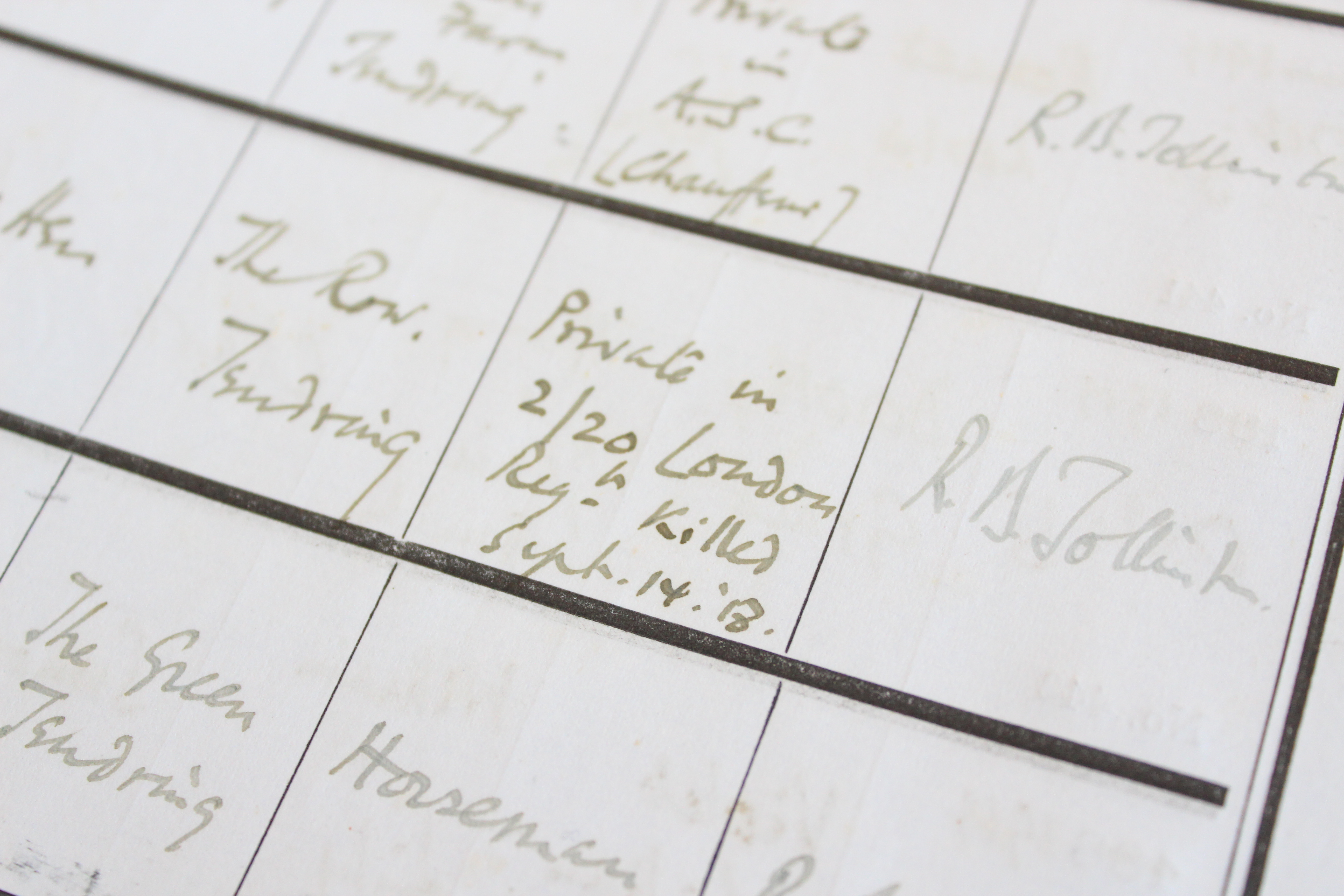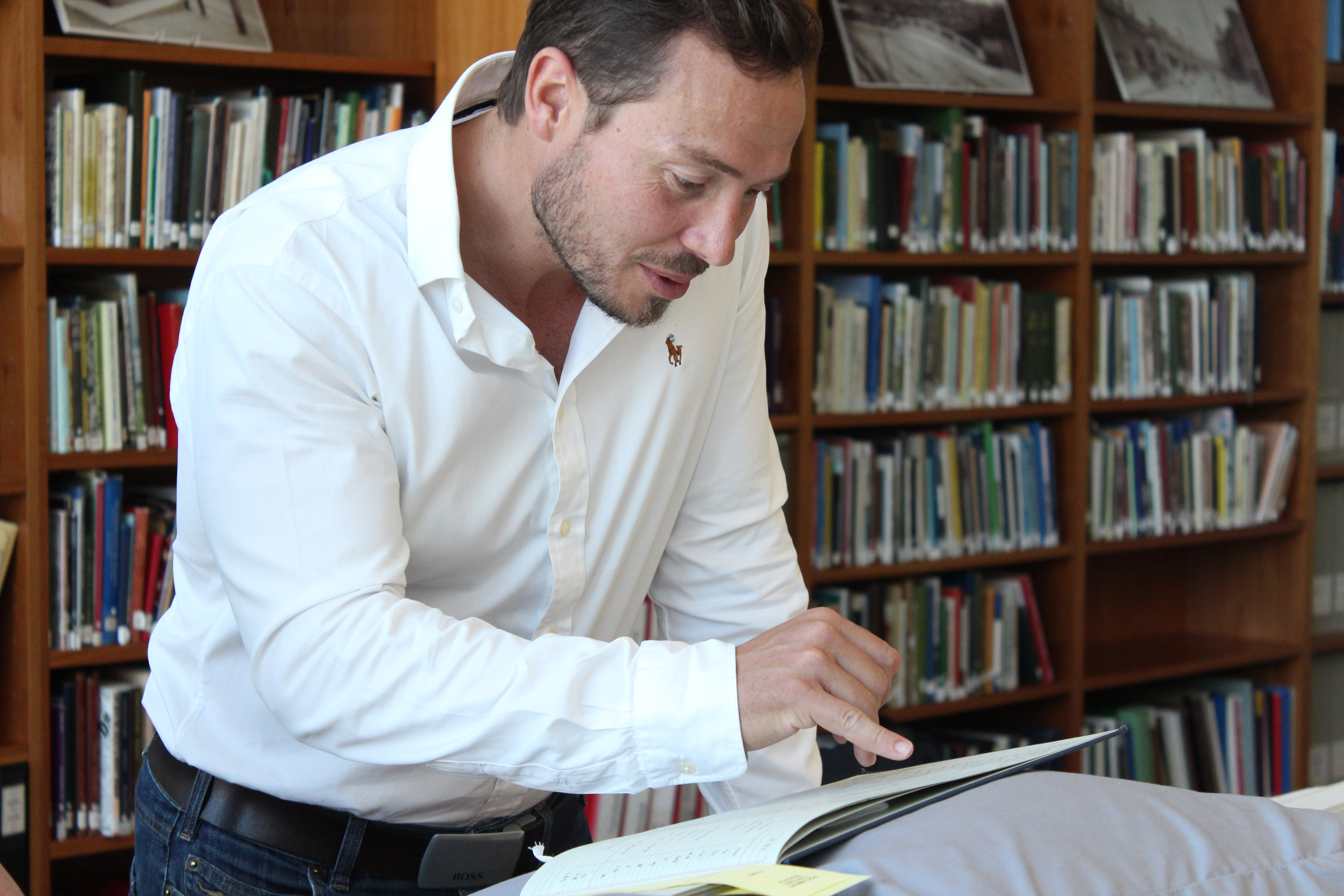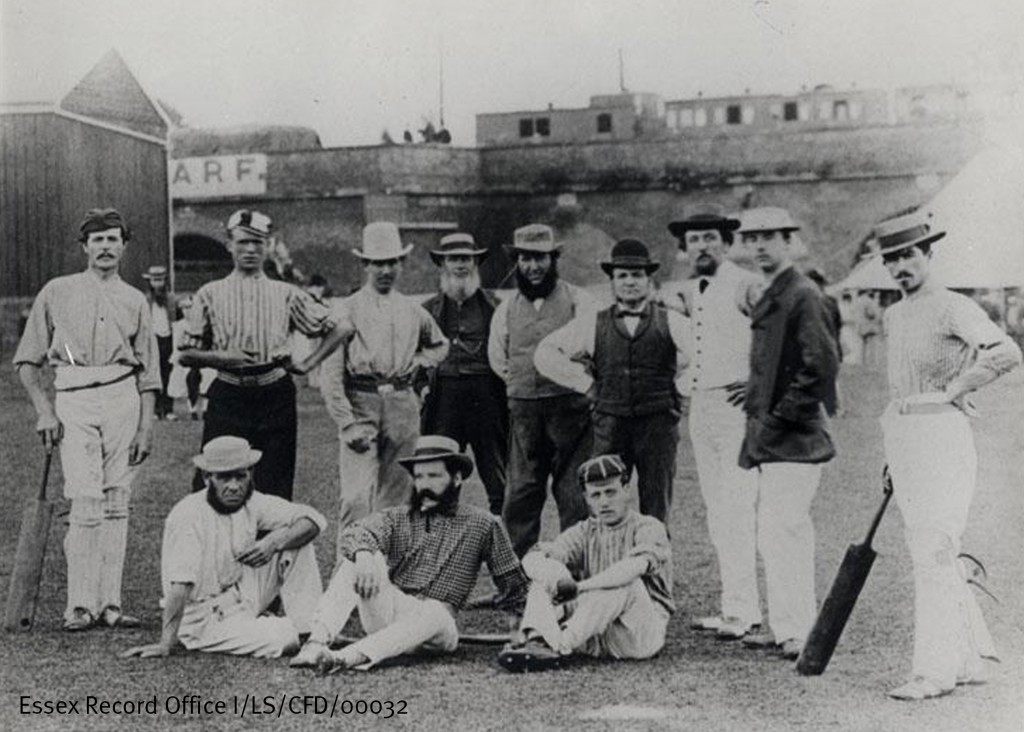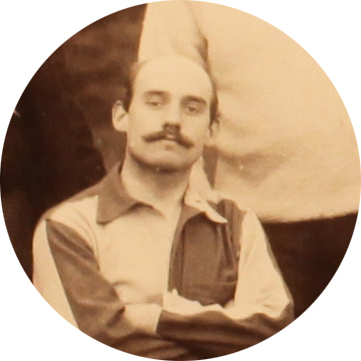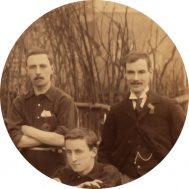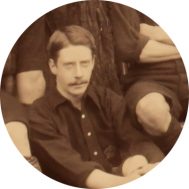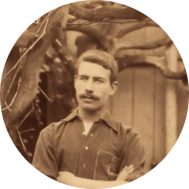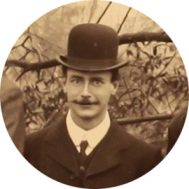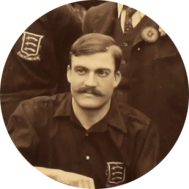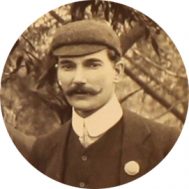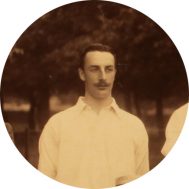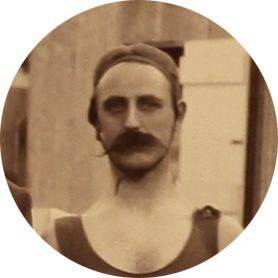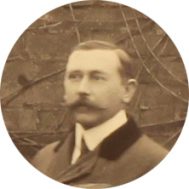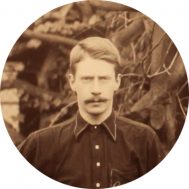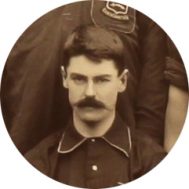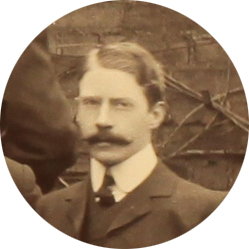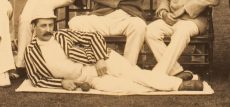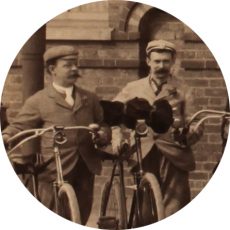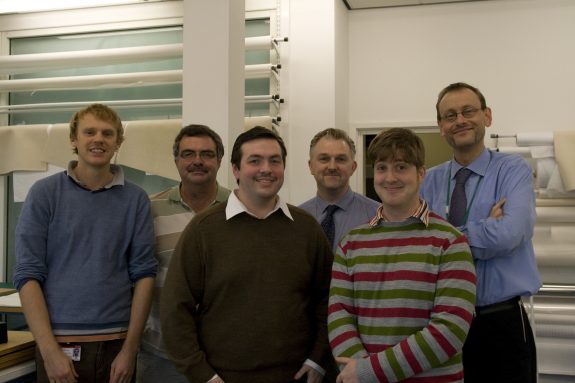Today, 14 January 2016, marks 140 years since Essex County Cricket Club was established at a public meeting at the Shire Hall in Chelmsford. There had been earlier county sides, but none had lasted very long, and the appetite was there to establish a county club on a proper footing. Adverts for the meeting such as this one appeared in the Chelmsford Chronicle inviting people to attend:
It was agreed at this meeting to establish a county cricket club with its home ground at Brentwood. One Chronicle report following the meeting looked forward to hopefully beating neighbouring counties who had so far overtaken Essex in matters of cricket:
‘One would almost as soon think of seeking snow in June or roses in December, as of talking about cricket in January, and we are glad to think that the formation of a county cricket club for Essex while the frost and the short days are with us is an earnest of the enthusiasm which we shall see displayed in this fine old English game during the coming season. It must be confessed that for many years Essex has not held the place it ought to have held in the domain of cricket, for although it has just as many facilities for the game as any of its neighbours, nearly all the home counties have in this matter taken precedence of us. Nevertheless, we have some good hard-hitters in the county and some very pretty fielders as well, and now that a county club has been launched we hope to see past neglect atoned for, and, if it be possible, some good lickings administered to the far-famed cricketers of counties like Kent and Surrey. The new club has been formed under the best possible auspices, for among those who have called it into existence are such men as Mr Perry Watlington, Mr Round, MP, and Mr Lescher, of Brentwood, whose names ought to operate like a talisman upon the lovers of the willow in Essex.’
Chelmsford Chronicle, Friday 21 January 1876
Brentwood was selected for a number of reasons:
‘A capital ground, situate at Brentwood, has been offered to the club, on the most liberal terms, alike as to rent and privileges, by the Countess Tasker, and perhaps, although Brentwood is some dozen miles or so out of the centre of the county, it would have been hard to find a town more convenient on the whole, because, as Mr Lescher stated at Friday’s meeting in Chelmsford, it is near to London, it has capital hotel accommodation, it is close to a garrison from whence a band will be easily obtainable on match days, and the field offered is not only suitable and well fenced, but is within an easy walk of the railway station. Nor does this fortuitous combination of circumstances, manifold as it is, exhaust all the advantages of taking up a position for the club at Brentwood, for we gather that the sinews of war may be considerably recruited by letting off a portion of the field as a playground for the boys of Brentwood Grammar School, and that the situation of the ground is also favourable for letting off the grass, of which there are nine acres, for sheep feeding. The outlook, altogether, is cheering, but, if the club is to succeed, the cricketers of the county will, of course, have to put their shoulders fairly to the wheel which they will hardly refuse to do if they are real lovers of the game and care for its development in Essex.’
Chelmsford Chronicle, Friday 21 January 1876
The first game took place on 5th and 6th May 1876 at Brentwood, announced in the Chronicle with promises of the building of a grand pavilion, and a part of the ground devoted to lawn tennis and croquet (for the ladies):
Brentwood was not to prove as convenient a location as had been hoped, and in 1885 the Club’s home ground was moved to Leyton. It moved again later to Chelmsford, where it remains today.
Early Essex sides were mostly composed of amateur players, with one or two professionals, such as cousins Frank and Joseph Silcock. Despite their professional status, Frank and Joseph both still had other occupations. Frank, born in 1838 in Sawbridgeworth, appears in most census returns as a sadler, with the exception of 1881 when he was described as a ‘Cricket Outfitter’. Joseph was a harness maker, and in 1871 he was also running a beer house. The name of his pub? The Cricketers.
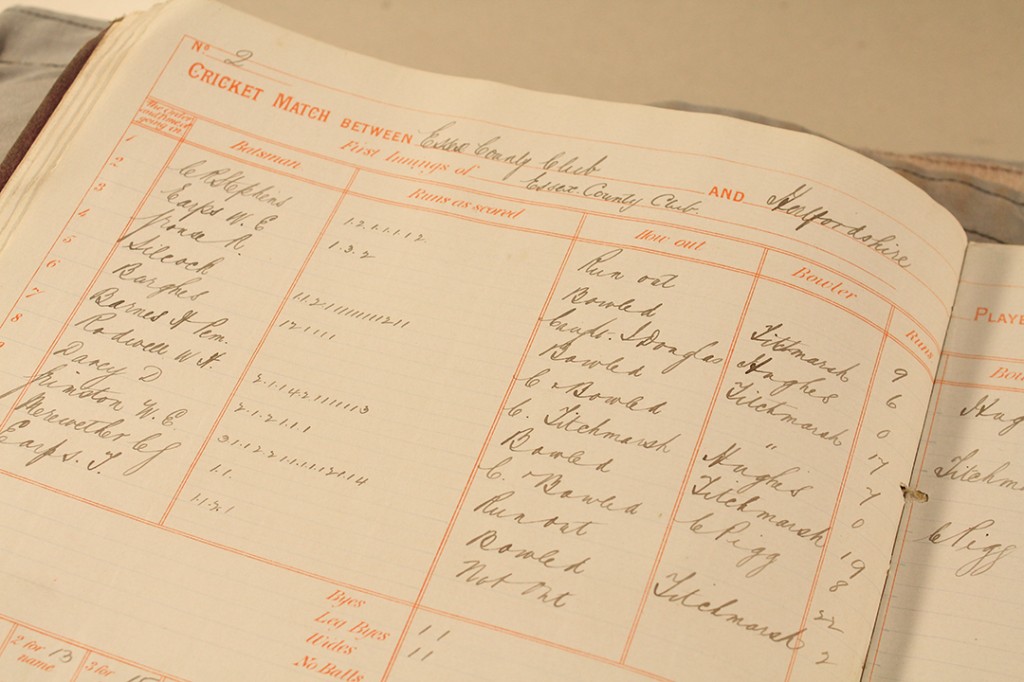
One of the games from the earliest surviving scorebook, beginning in 1879. One of the Silcock brothers played in this game against Hertfordshire – he was bowled out for 17 (D/Z 82/2/1)
Essex has had its fair share of eccentric results over the years. On more than one occasion they have snatched defeat from the jaws of victory; perhaps the best example was their game against Derbyshire on 19-20 June 1904. Essex scored 597 in their first innings, but went on to lose by 9 wickets. 343 of those runs belonged to Percy Perrin. His innings included 68 fours, and remains the highest score by an Essex player.
Another Essex record was scored by John “Johnny” William Henry Tyler Douglas in another game against Derbyshire, this time in 1921. In this extraordinary game, Douglas saved the Essex innings with S.N. Hare, who together put on a 9th wicket partnership of 251. Douglas himself scored 210 – his highest batting score – and also got his best bowling figures – 9-47 and 2-0. Essex won the game by an innings and 74 runs.
Douglas was a significant figure in the development of Essex cricket. He first played for the county in 1902, then remained there from 1904. He was captain from 1911-1928. Seven times he took over 100 wickets in a season, with a best of 147 in 1920. He also played for England (and captained them), and an Olympic boxer. He was killed in a shipwreck off the coast of Denmark in 1930.
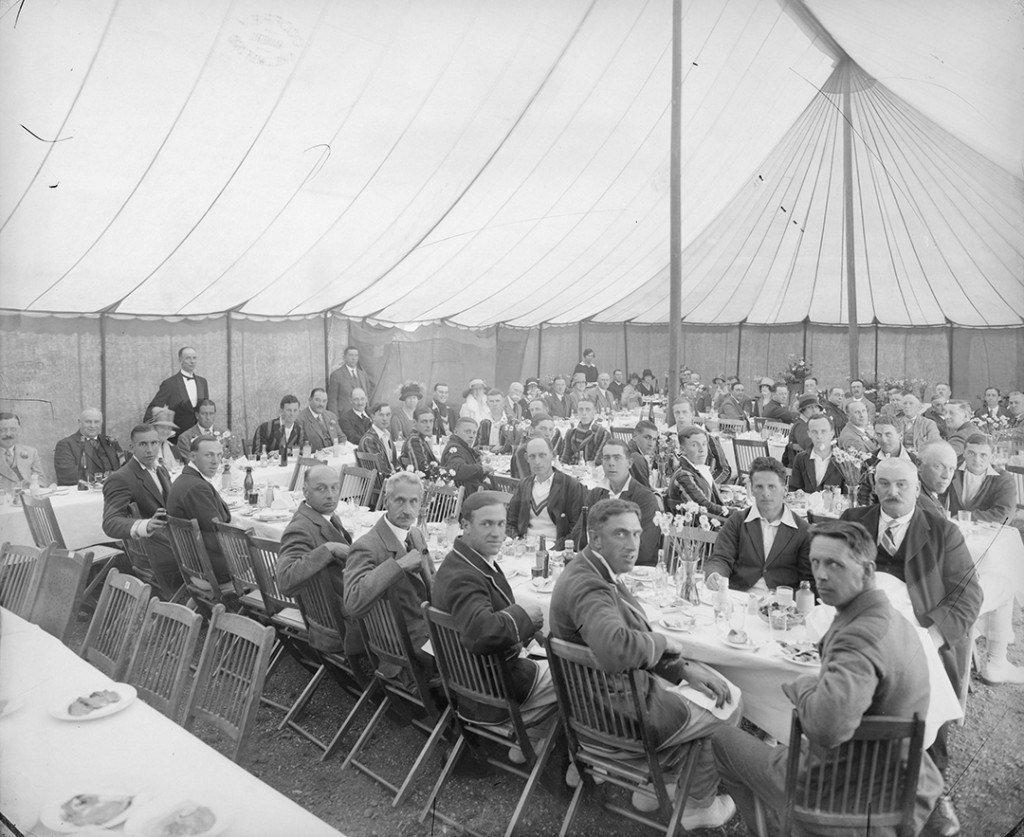
We shouldn’t forget the social side of cricket – this meal as part of a game between Essex and Oxford University in 1927 was complete with uniformed servants (D/F 269/1/4744)
May and June 1934 were a rollercoaster ride for Essex. A massive loss to Kent by an innings and 192 runs was followed immediately by a win against Surrey – by an innings and 192 runs.
In the 1930s, Yorkshire were the team to beat. In 1935 they lost just one game in the County Championship, and that was to Essex. The two teams played at Huddersfield on 31 July-1 August. Essex bowled out Yorkshire for 31, and went on to win by an innings and 204 runs. (Let’s not mention the game in 1932 when Yorkshire scored 555, then dismissed Essex for 78 and 164, winning by an innings and 313 runs.)
We wish our county team luck with the new season as it begins in a few weeks.

